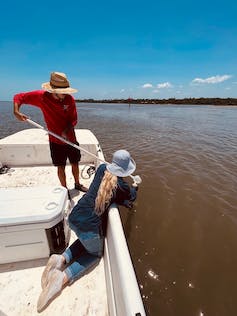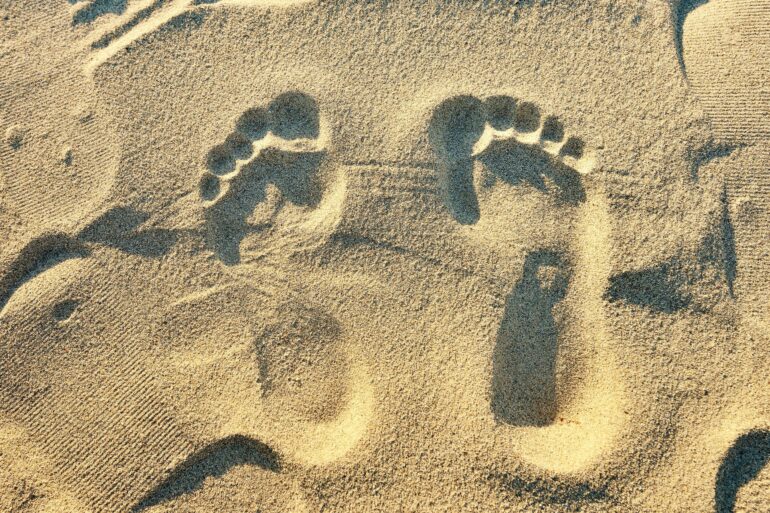Human DNA can be sequenced from small amounts of water, sand and air in the environment to potentially extract identifiable information like genetic lineage, gender, and health risks, according to our new research.
Every cell of the body contains DNA. Because each person has a unique genetic code, DNA can be used to identify individual people. Typically, medical practitioners and researchers obtain human DNA through direct sampling, such as blood tests, swabs or biopsies. However, all living things, including animals, plants and microbes, constantly shed DNA. The water, soil and even the air contain microscopic particles of biological material from living organisms.
DNA that an organism has shed into the environment is known as environmental DNA, or eDNA. For the last couple of decades, scientists have been able to collect and sequence eDNA from soil or water samples to monitor biodiversity, wildlife populations and disease-causing pathogens. Tracking rare or elusive endangered species through their eDNA has been a boon to researchers, since traditional monitoring methods such as observation or trapping can be difficult, often unsuccessful and intrusive to the species of interest.
The authors and their colleagues use environmental DNA to study sea turtles.
Researchers using eDNA tools usually focus only on the species they’re studying and disregard DNA from other species. However, humans also shed, cough and flush DNA into their surrounding environment. And as our team of geneticists, ecologists and marine biologists in the Duffy Lab at the University of Florida found, signs of human life can be found everywhere but in the most isolated locations.
Animals, humans and viruses in eDNA
Our team uses environmental DNA to study endangered sea turtles and the viral tumors to which they are susceptible. Tiny hatchling sea turtles shed DNA as they crawl along the beach on their way to the ocean shortly after they are born. Sand scooped from their tracks contains enough DNA to provide valuable insights into the turtles and the chelonid herpesviruses and fibropapillomatosis tumors that afflict them. Scooping a liter of water from the tank of a recovering sea turtle under veterinary care equally provides a wealth of genetic information for research. Unlike blood or skin sampling, collecting eDNA causes no stress to the animal.
Genetic sequencing technology used to decode DNA has improved rapidly in recent years, and it is now possible to easily sequence the DNA of every organism in a sample from the environment. Our team suspected that the sand and water samples we were using to study sea turtles would also contain DNA from a number of other species – including, of course, humans. What we didn’t know was just how informative the human DNA we could extract would be.

